ChatGPT:Trier is a historic city in Germany’s Rhineland-Palatinate state, known as the country’s oldest city. Founded by the Romans in 16 BC, it boasts numerous well-preserved Roman structures, such as the Porta Nigra, a massive ancient city gate. Trier also features impressive medieval architecture, including the Trier Cathedral and the Church of Our Lady. The city’s rich history is complemented by its location along the Moselle River, making it a picturesque destination. Additionally, Trier is recognized for its connection to Karl Marx, who was born there in 1818. The city combines historical charm with a vibrant cultural scene.
Origin and Ancient History:
Trier, originally known as Augusta Treverorum, was founded by the Romans in 16 BC during the reign of Emperor Augustus. It was established as a Roman colony and quickly grew into a significant administrative and commercial center in the Roman Empire. The city was named after the local Celtic tribe, the Treveri, who inhabited the region before Roman conquest.
Roman Era:
During its peak in the 3rd and 4th centuries AD, Trier became one of the most important cities in the Roman Empire north of the Alps. It served as the capital of the Roman province of Gallia Belgica and later as the capital of the Western Roman Empire under Emperor Constantine the Great. Trier was adorned with numerous grand structures, including the Porta Nigra, Roman baths, an amphitheater, and a basilica, many of which still stand today.
Medieval Period:
With the decline of the Roman Empire, Trier experienced significant upheaval. It was sacked by the Franks and other Germanic tribes in the 5th century. Despite these challenges, Trier remained an important religious center. The Trier Cathedral, begun in the early 4th century and expanded over the centuries, became a prominent seat of the archbishopric. During the Middle Ages, Trier continued to develop as a regional political and ecclesiastical hub.
Modern Era:
In the early modern period, Trier was heavily impacted by the Thirty Years’ War and other conflicts, leading to periods of decline and recovery. In the 19th century, Trier’s economy began to modernize, and it became part of the Prussian Rhineland. The city also gained prominence due to its association with Karl Marx, the philosopher and revolutionary socialist, who was born there in 1818.
20th Century to Present:
Trier endured significant damage during World War II but was subsequently rebuilt. In the post-war period, Trier became part of the newly established state of Rhineland-Palatinate in West Germany. Today, Trier is known for its rich historical heritage, with its Roman monuments recognized as UNESCO World Heritage Sites. The city is also a vibrant cultural center, attracting tourists with its historical landmarks, museums, and annual events.
Development and Legacy:
Trier’s development over the centuries reflects its strategic importance and cultural significance. From its origins as a Roman colony to its role as a medieval religious center and modern cultural destination, Trier has maintained a unique blend of historical continuity and adaptation. Its well-preserved ancient architecture and archaeological sites offer a glimpse into its storied past, while its modern amenities and educational institutions ensure its ongoing relevance in contemporary Germany.
Trier is home to numerous historical monuments and attractions, reflecting its rich heritage. Some of the most notable include:
- Porta Nigra: This iconic Roman city gate, dating back to the 2nd century AD, is the largest of its kind north of the Alps and a UNESCO World Heritage Site.
- Trier Cathedral (Dom St. Peter): One of the oldest cathedrals in Germany, its construction began in the 4th century under Emperor Constantine and has Romanesque, Gothic, and Baroque elements.
- Church of Our Lady (Liebfrauenkirche): Located next to the cathedral, this early Gothic church is another UNESCO World Heritage Site.
- Roman Imperial Baths (Kaiserthermen): These ancient Roman baths, built in the 4th century, offer a glimpse into the leisure activities of the Romans.
- Barbara Baths (Barbarathermen): Another set of extensive Roman baths, these are among the largest Roman bath complexes known.
- Roman Amphitheater: Dating back to the 2nd century AD, this well-preserved amphitheater could accommodate up to 20,000 spectators and was used for gladiatorial games and public events.
- Constantine Basilica (Aula Palatina): Built around AD 310, this massive Roman palace basilica served as the throne room of Emperor Constantine and is now a Protestant church.
- Electoral Palace (Kurfürstliches Palais): This beautiful Rococo palace, built in the 17th century, is adjacent to the Constantine Basilica and houses government offices.
- Roman Bridge (Römerbrücke): The oldest bridge in Germany, its stone pillars date back to the 2nd century AD.
- Karl Marx House (Karl-Marx-Haus): The birthplace of Karl Marx, this museum is dedicated to the life and works of the famous philosopher and revolutionary.
- Trier Archaeological Museum (Rheinisches Landesmuseum Trier): One of the most important archaeological museums in Germany, it houses extensive collections from the Roman era.
- St. Matthias’ Abbey (Benediktinerabtei St. Matthias): A historic Benedictine monastery and pilgrimage site, it is believed to house the tomb of the Apostle Matthias.
- Market Square (Hauptmarkt): The central square of Trier, surrounded by medieval buildings, shops, and cafes, it is a vibrant hub of activity.
- Judengasse: A historic alley that was the center of Trier’s medieval Jewish community, featuring remnants of the Jewish quarter.
These attractions highlight Trier’s long and varied history, from its Roman origins to its medieval and modern developments.
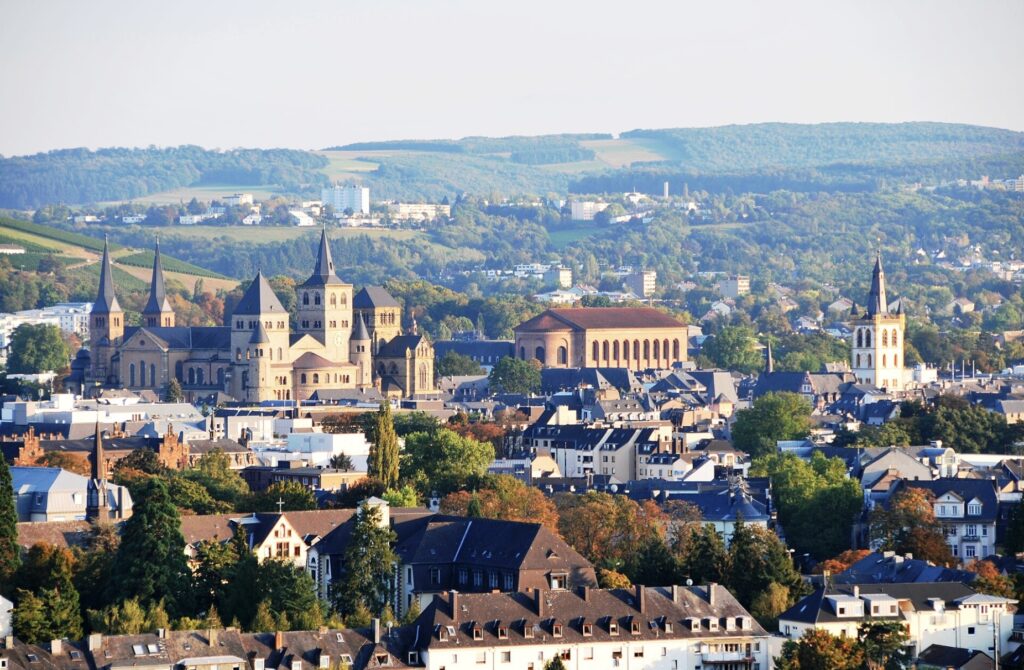

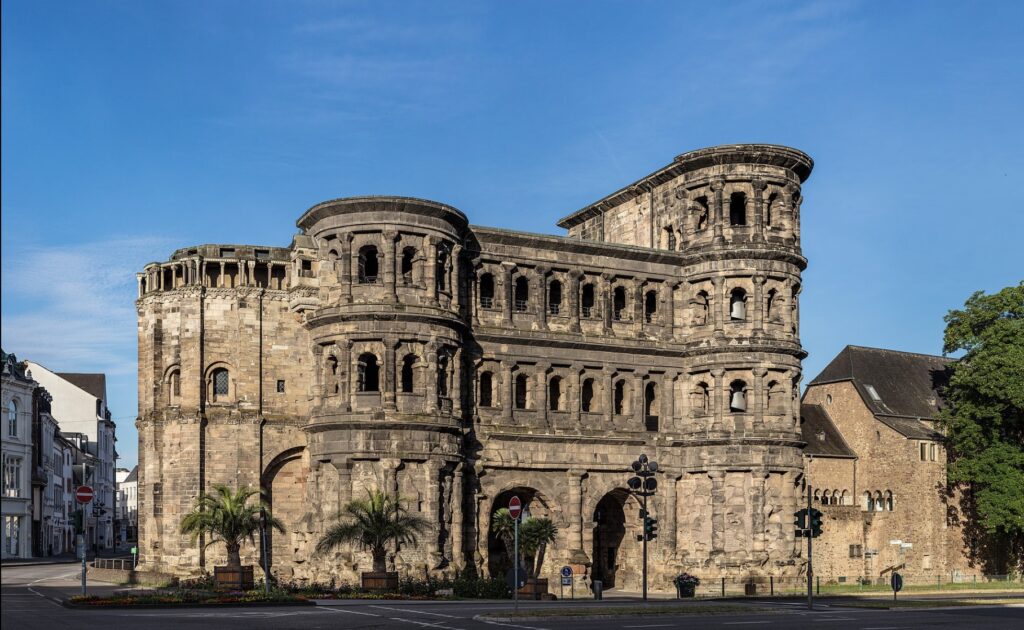
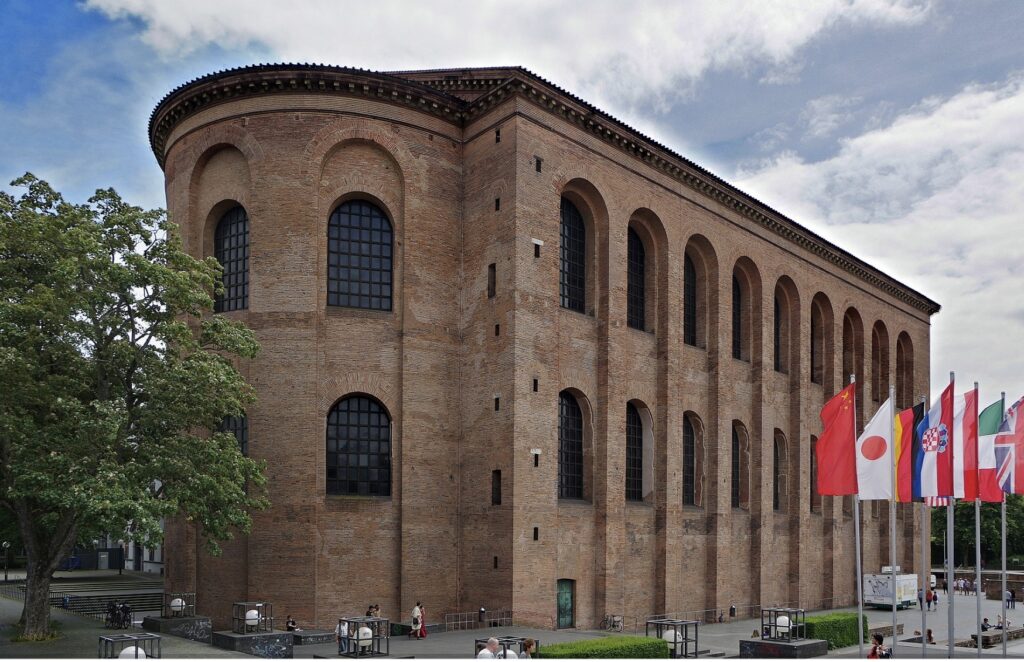
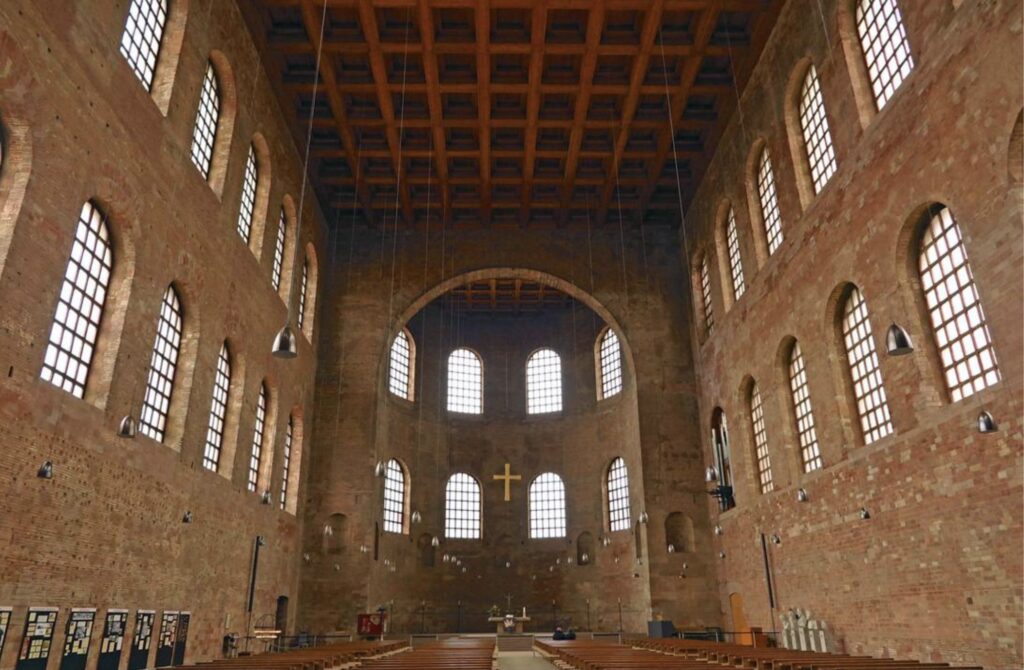
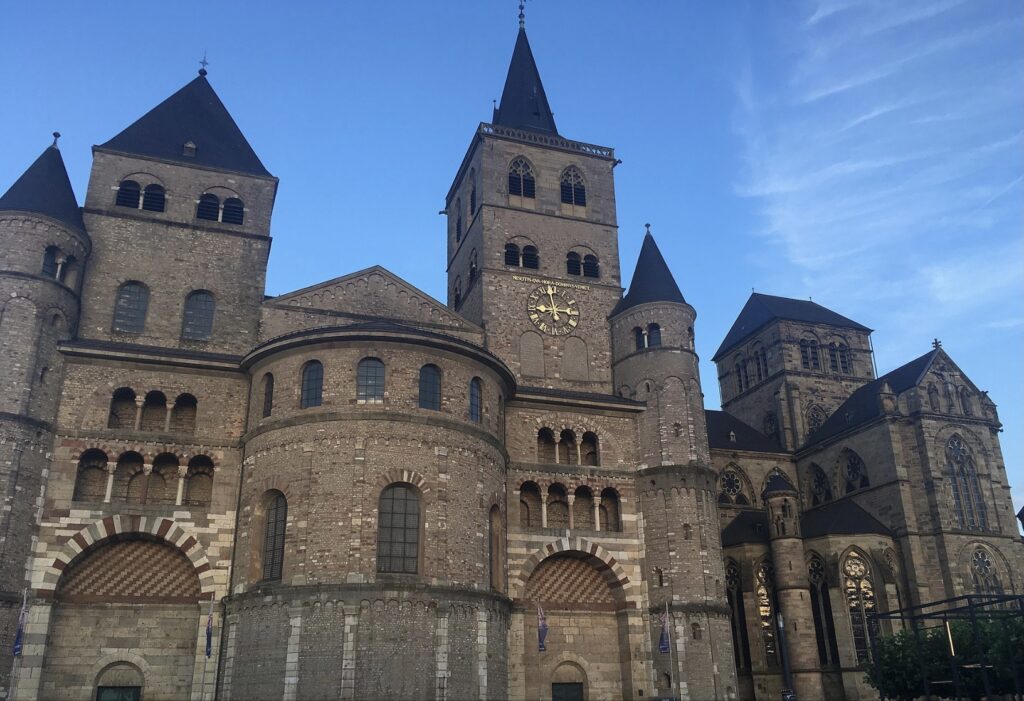
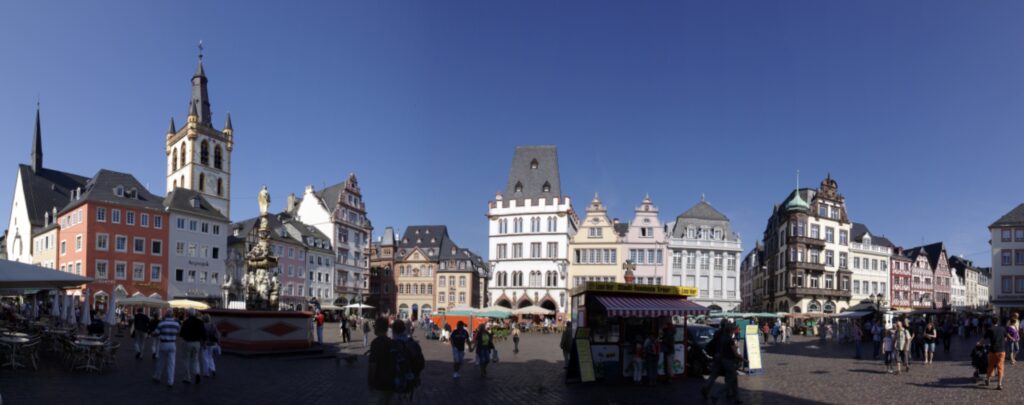
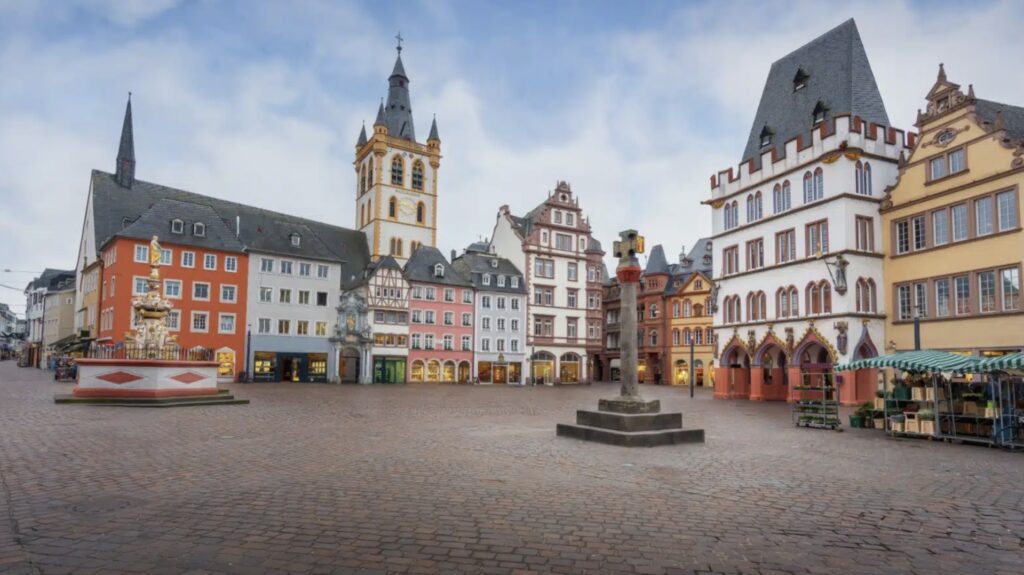
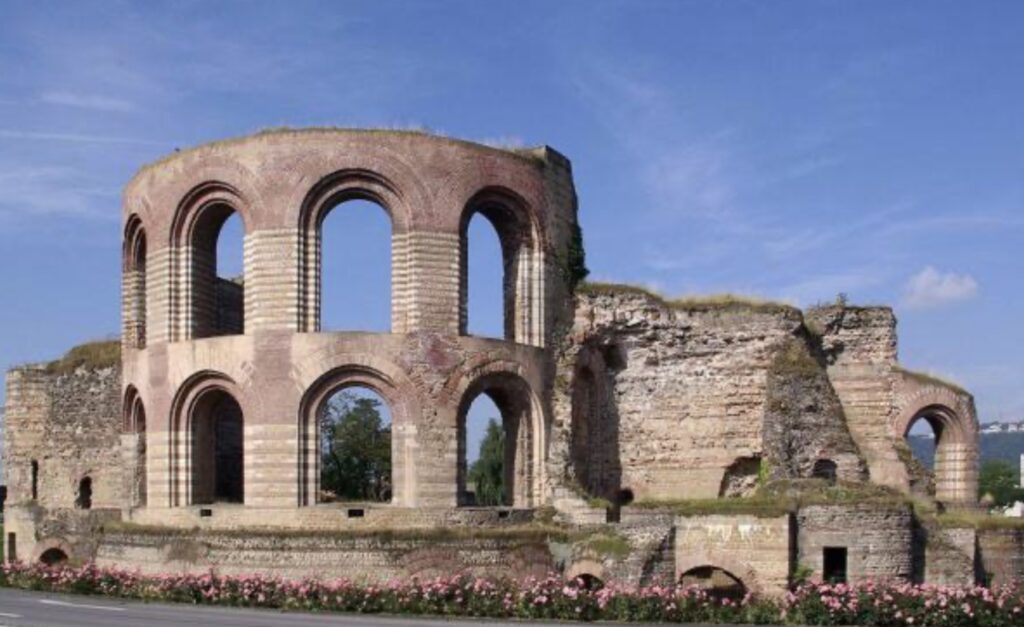
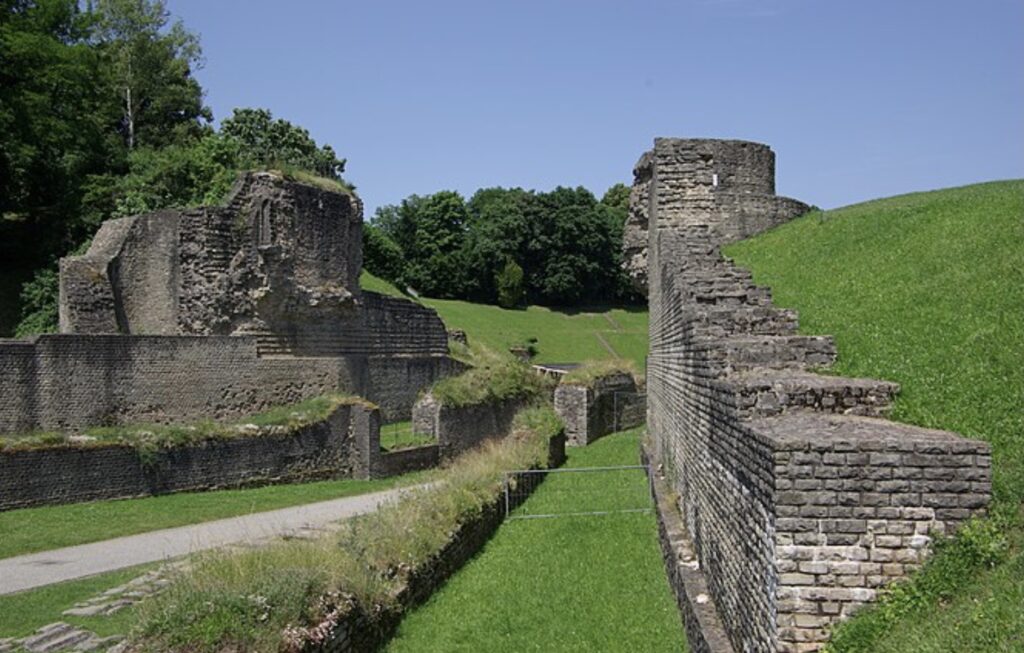
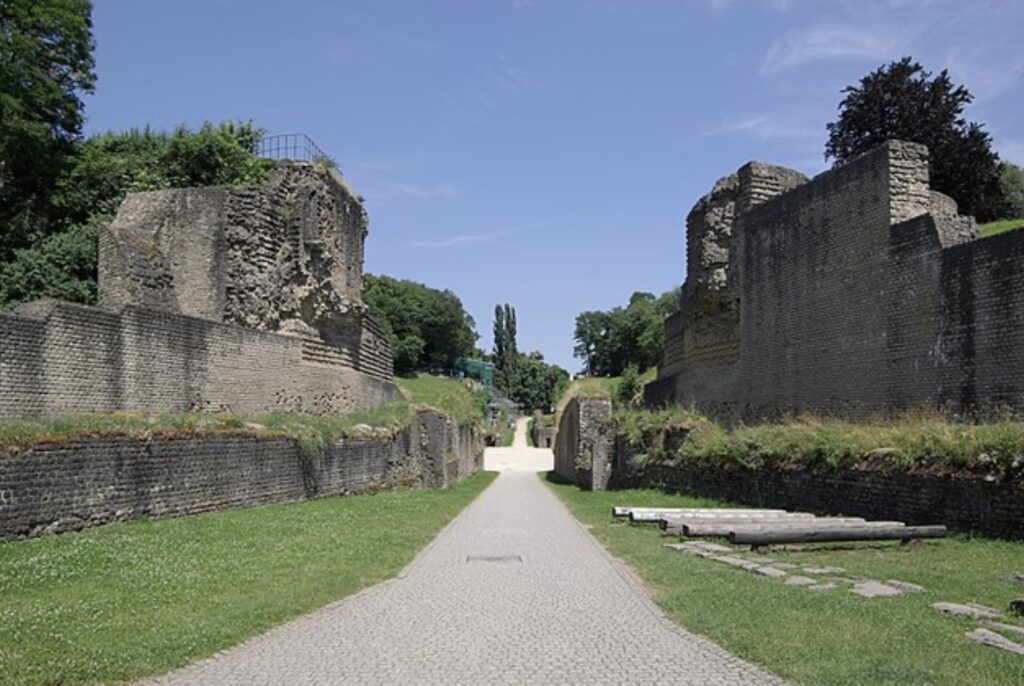
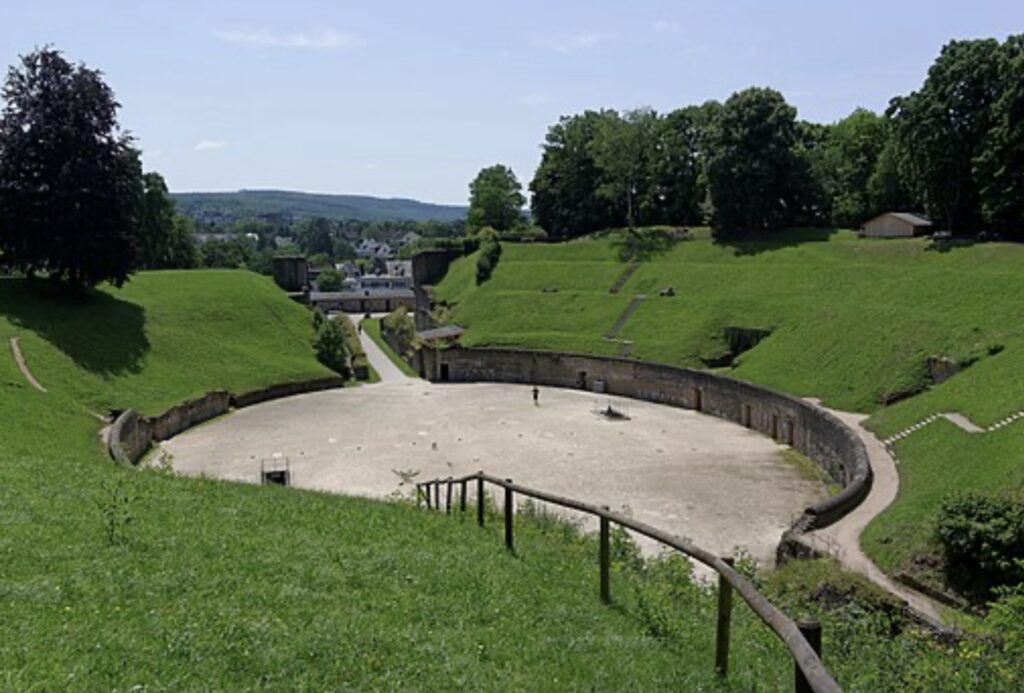
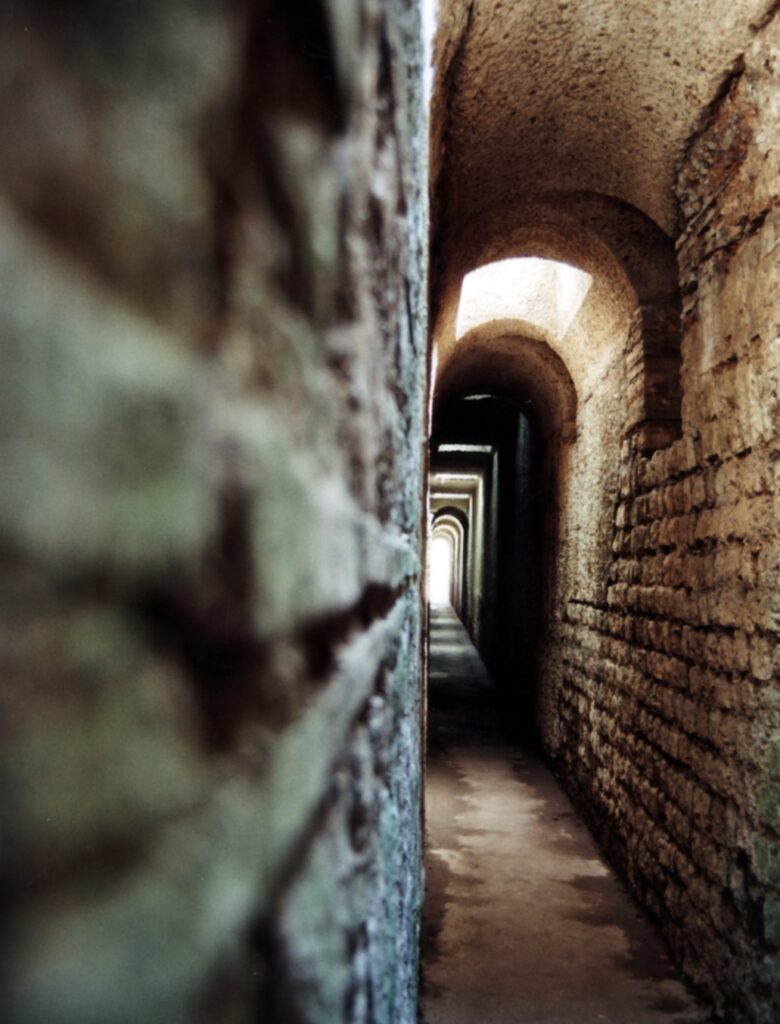
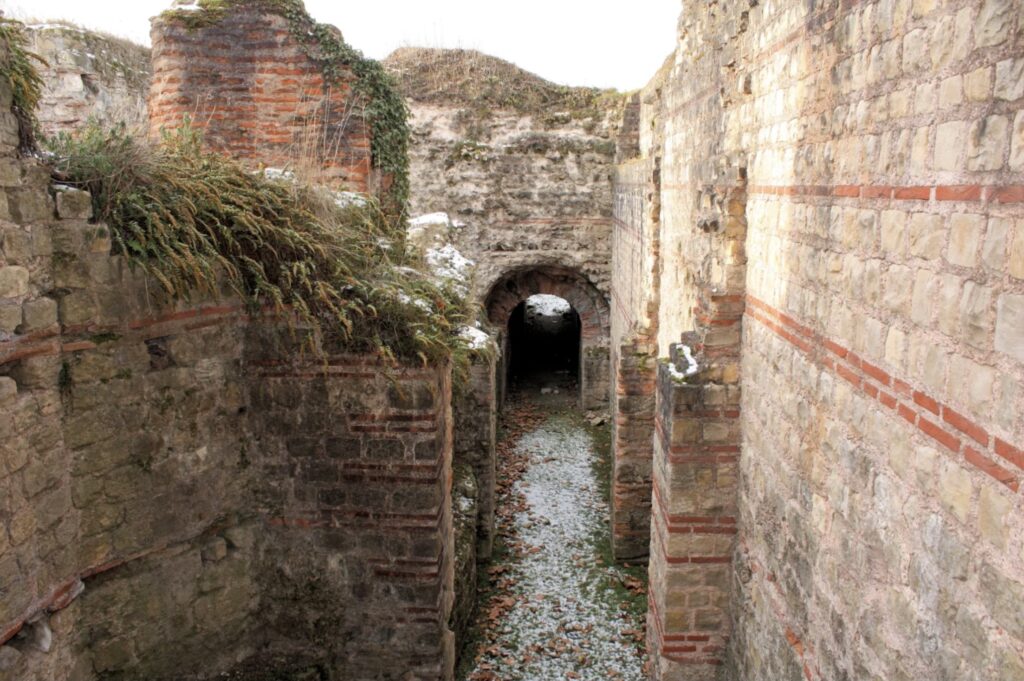
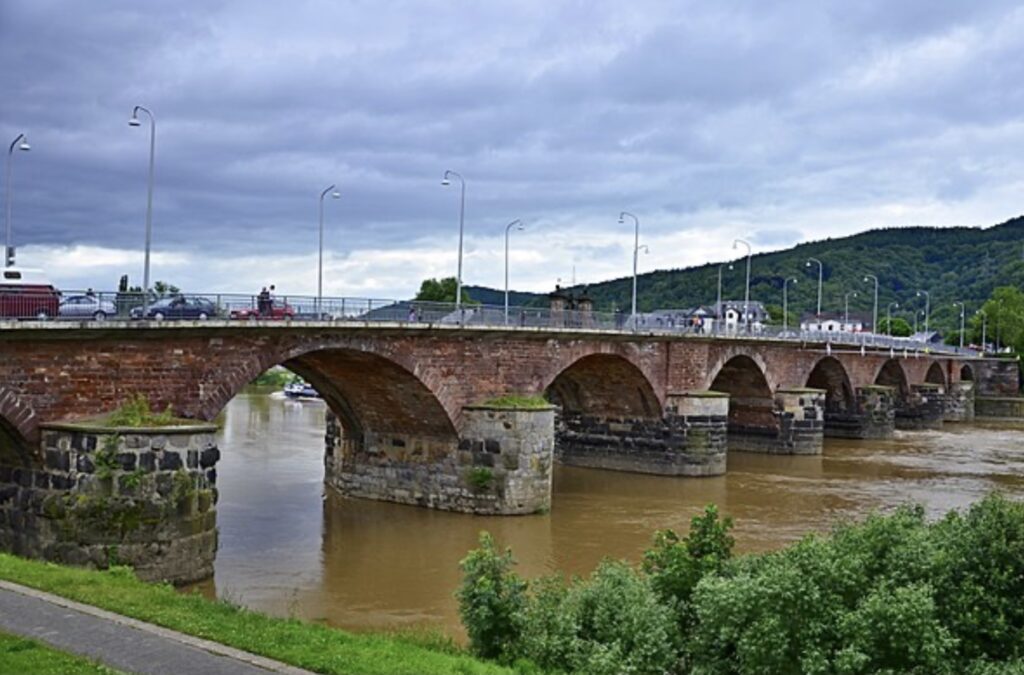
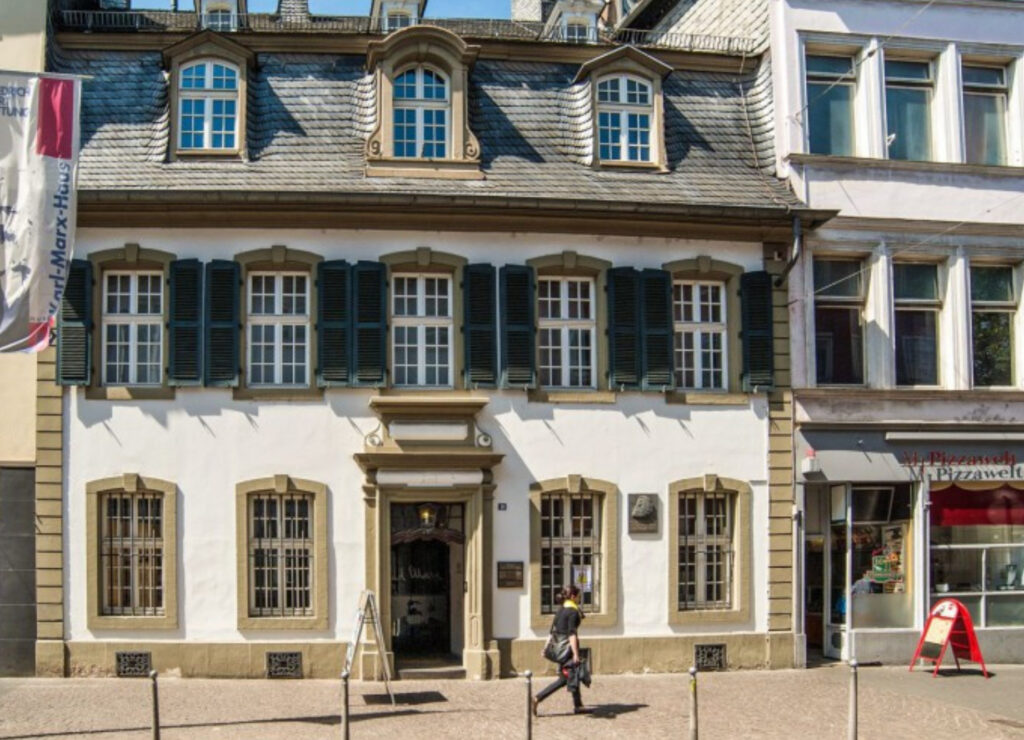
Trier offers a variety of local food specialties that reflect its regional and historical influences. Some of the most notable include:
- Wein (Wine): Trier is located in the Moselle wine region, known for its excellent Riesling wines. Wine tasting and vineyard tours are popular activities.
- Flammkuchen: Often referred to as “Tarte Flambée,” this dish is similar to a thin-crust pizza, typically topped with crème fraîche, onions, and bacon.
- Saumagen: A traditional Palatinate dish, similar to a sausage, made from pork, potatoes, and spices, usually served with sauerkraut and mashed potatoes.
- Himmel und Erde: Meaning “Heaven and Earth,” this dish combines mashed potatoes (earth) with apples (heaven), often served with black pudding or sausage.
- Döppekooche: A hearty potato cake made with grated potatoes, onions, bacon, and sometimes sausage, baked in the oven.
- Rinderroulade: Beef roulades filled with bacon, onions, mustard, and pickles, braised until tender and served with red cabbage and potato dumplings.
- Zwiebelkuchen: Onion pie made with a dough crust and topped with onions, cream, and bacon, often enjoyed with Federweißer (young wine).
- Tresterfleisch: Pork marinated in grape pomace, a byproduct of wine production, giving it a unique flavor, usually served with potatoes or bread.
- Mosel-style Fish: Freshwater fish from the Moselle River, such as trout or pike, prepared in various styles, often with a wine-based sauce.
- Trierer Viez: A local apple cider, slightly tart and less sweet than many other ciders, commonly enjoyed in the region.
These specialties offer a taste of Trier’s culinary traditions, often paired with the region’s renowned wines.
A one-day walking route in Trier to appreciate its historical significance can be both enjoyable and informative. Here’s a suggested itinerary:
Morning:
- Porta Nigra:
- Start your day at the Porta Nigra, Trier’s most famous landmark. Spend about 30-45 minutes exploring this well-preserved Roman city gate.
- Hauptmarkt (Main Market Square):
- Walk from Porta Nigra to the Hauptmarkt. This bustling square is surrounded by beautiful medieval buildings. Take some time to admire the architecture and perhaps grab a coffee at one of the cafes.
- St. Peter’s Cathedral (Trier Cathedral):
- A short walk from the Hauptmarkt is the Trier Cathedral. Spend around 45 minutes exploring Germany’s oldest cathedral, including the Holy Robe Chapel and the Romanesque architecture.
- Church of Our Lady (Liebfrauenkirche):
- Adjacent to the cathedral is the Church of Our Lady. This early Gothic church is also worth a visit, taking about 30 minutes.
Late Morning:
- Constantine Basilica (Aula Palatina):
- Head towards the Constantine Basilica, a short walk from the cathedral. Spend about 30-45 minutes here, marveling at the grandeur of this ancient Roman basilica.
- Electoral Palace (Kurfürstliches Palais):
- Next to the basilica is the Electoral Palace. Stroll through the palace gardens and admire the Rococo architecture from the outside.
Lunch:
- Enjoy lunch at a local restaurant or café. The area around the Hauptmarkt offers numerous options for a meal. Try local specialties like Flammkuchen or Saumagen.
Afternoon:
- Roman Imperial Baths (Kaiserthermen):
- After lunch, walk to the Roman Imperial Baths. Spend about an hour exploring the extensive ruins of this ancient bath complex.
- Amphitheater:
- A bit further south, visit the Roman Amphitheater. Allocate around 45 minutes to explore this site where gladiatorial games were once held.
- Barbara Baths (Barbarathermen):
- If time permits, head to the Barbara Baths. Spend about 30 minutes here, though the site is more for archaeological interest as it is less well-preserved than the Imperial Baths.
Late Afternoon:
- Karl Marx House:
- End your walking tour with a visit to the Karl Marx House, located a bit to the west of the city center. Spend about an hour learning about the life and works of Karl Marx.
Evening:
- Moselle Riverfront:
- Conclude your day with a leisurely walk along the Moselle River. Enjoy the scenic views and perhaps have dinner at a riverside restaurant.
This walking route offers a comprehensive look at Trier’s historical sites, allowing you to experience its rich Roman, medieval, and modern heritage in one day.
